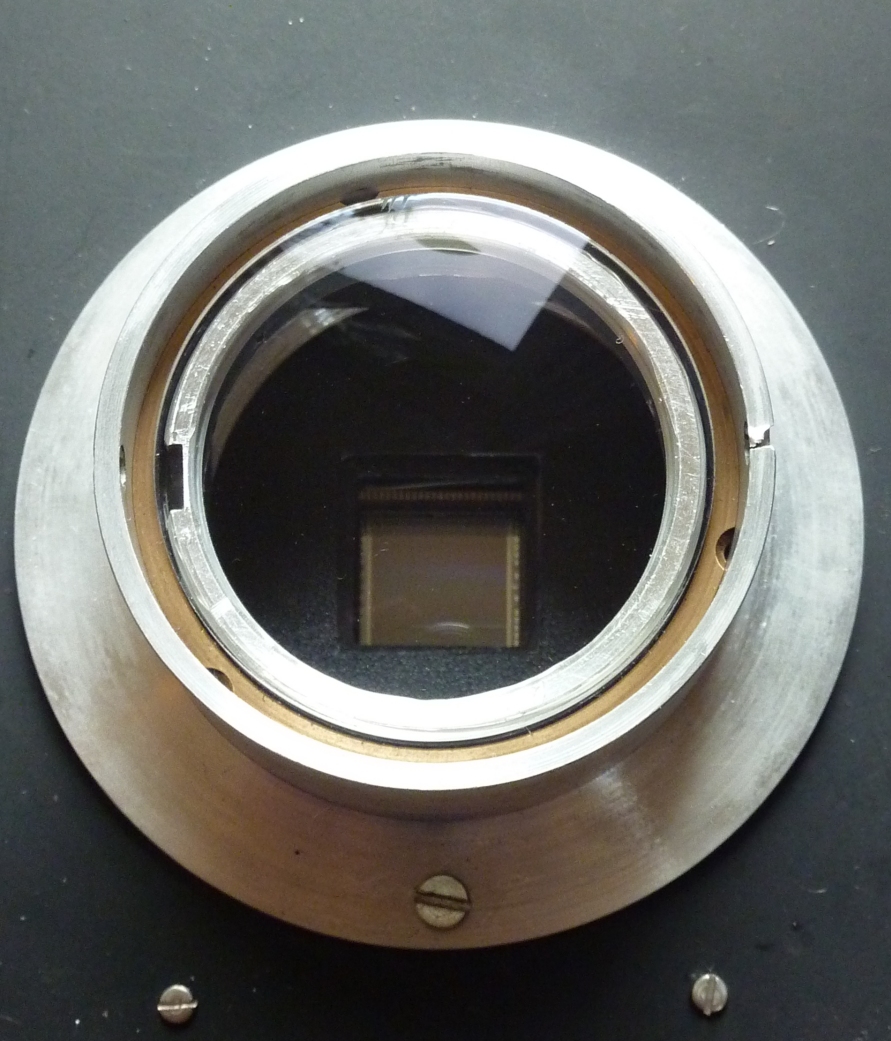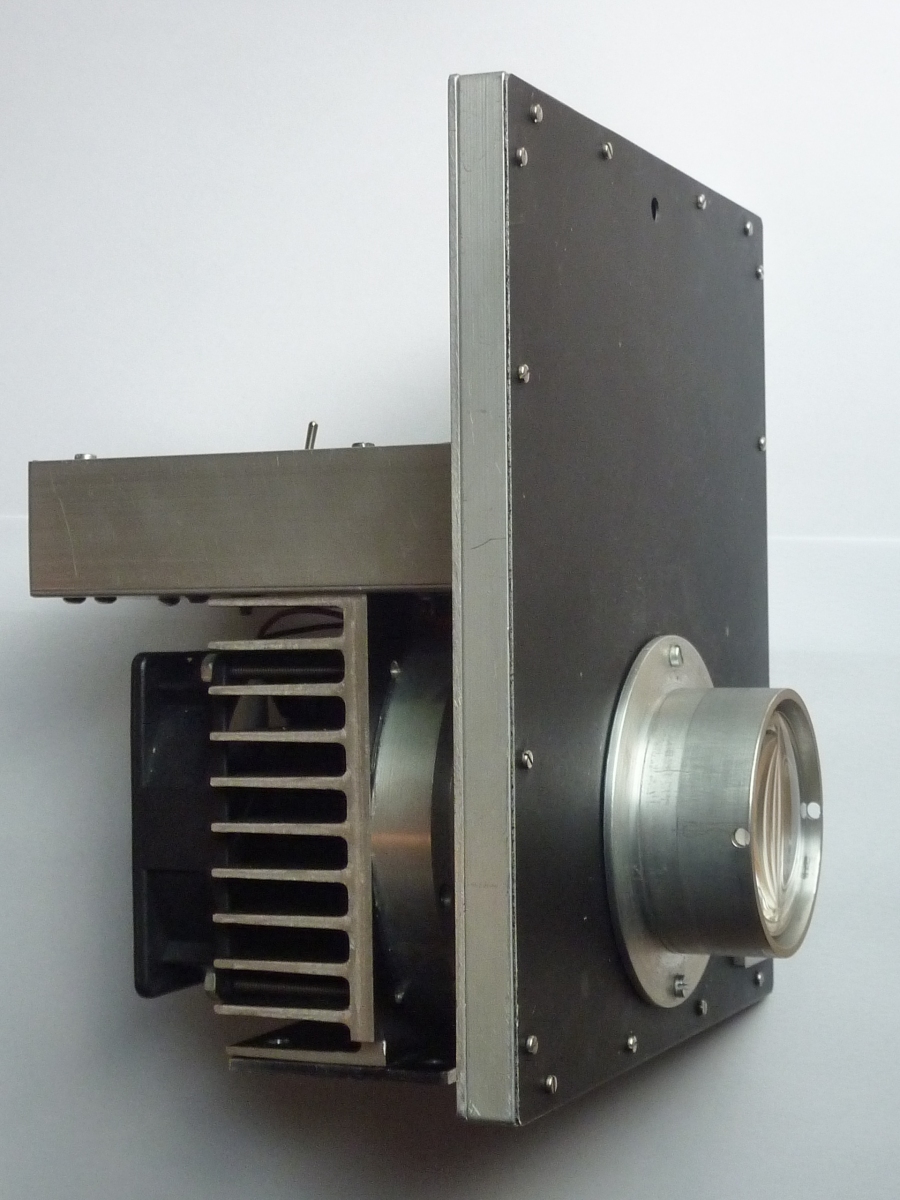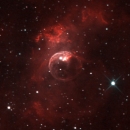|
Since my f/D=14.3 Cassegrain telescope, with its 10" f/D=4.3 primary, was mainly gathering dust, I recently modified it to a Newtonian configuration. Compared to my 10" f/D=5.7 Newton telescope, the faster optics would partly compensate for the relatively low sensitivity of the CCDs I'm using (that is: compared to modern standards). However, even with the smallest CCD, the FTT1010 with 1024x1024 pixels of 12x12um, the outer part of the 12.3x12.3mm image area would suffer from significant coma. The figure below shows calculated spot sizes in the centre, at the edge and at the corner of this CCD (lower left) and the through focus spot sizes at these locations (lower right). The full FOV covers 0.64x0.64 degrees. |
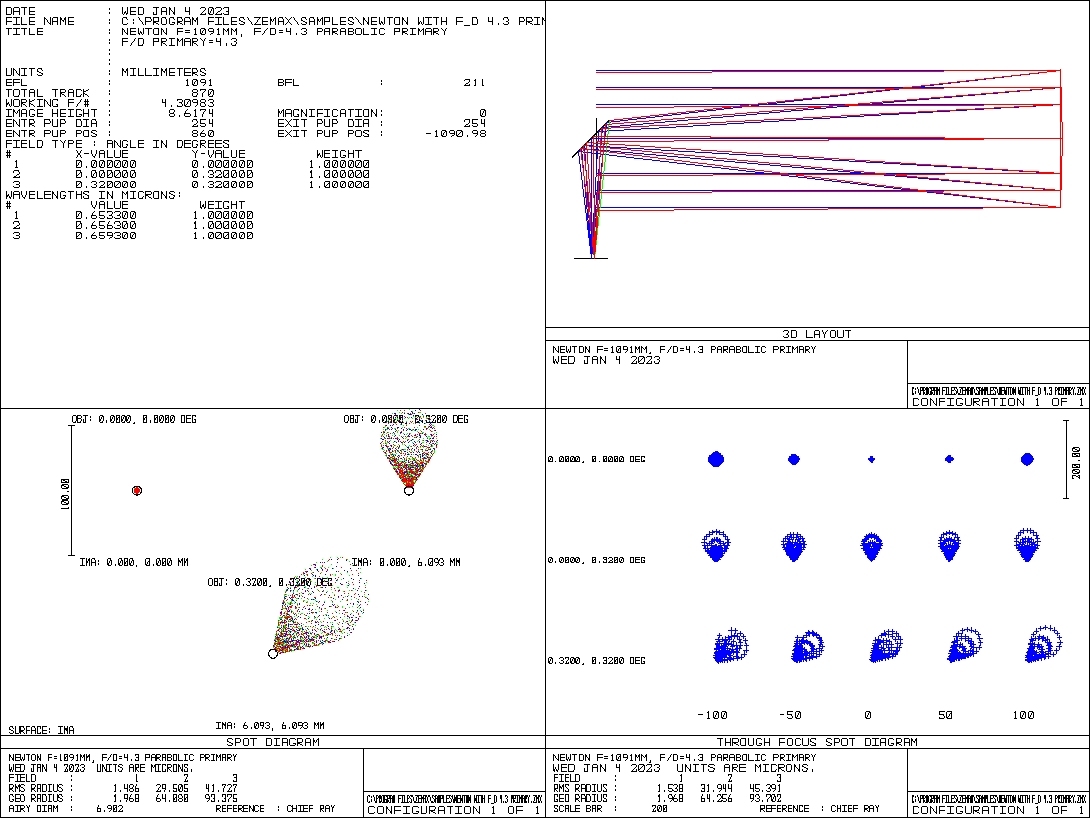 |
For narrow band imaging a reduction in coma can easily be obtained by adding a plano-convex lens close to the image plane. With narrow band imaging, chromatic aberration caused by this singlet lens is negligible. The figure below shows the calculated spot sizes for the same FOV (0.64x0.64 degrees), when inserting an f=250mm BK7-lens (Edmund Optics 45154) some 45mm in front of the CCD surface. The same scale as in the previous figure is used. |
 |
Although the spot size of the central spot increases the spot sizes at the edge and corner of the FOV improve by a factor of 2. Besides as a coma reducer, the lens acts as a focal reducer and the effective f/D becomes 3.5. This corresponds to a 1.5 times higher sensitivity. Compared to the f/D=5.7 Newton the sensivity gain is even a factor 2.6. The full FOV is 0.80x0.80 degrees with spot sizes at the edges and corners of the FTT1010 CCD that are still smaller than without the lens: |
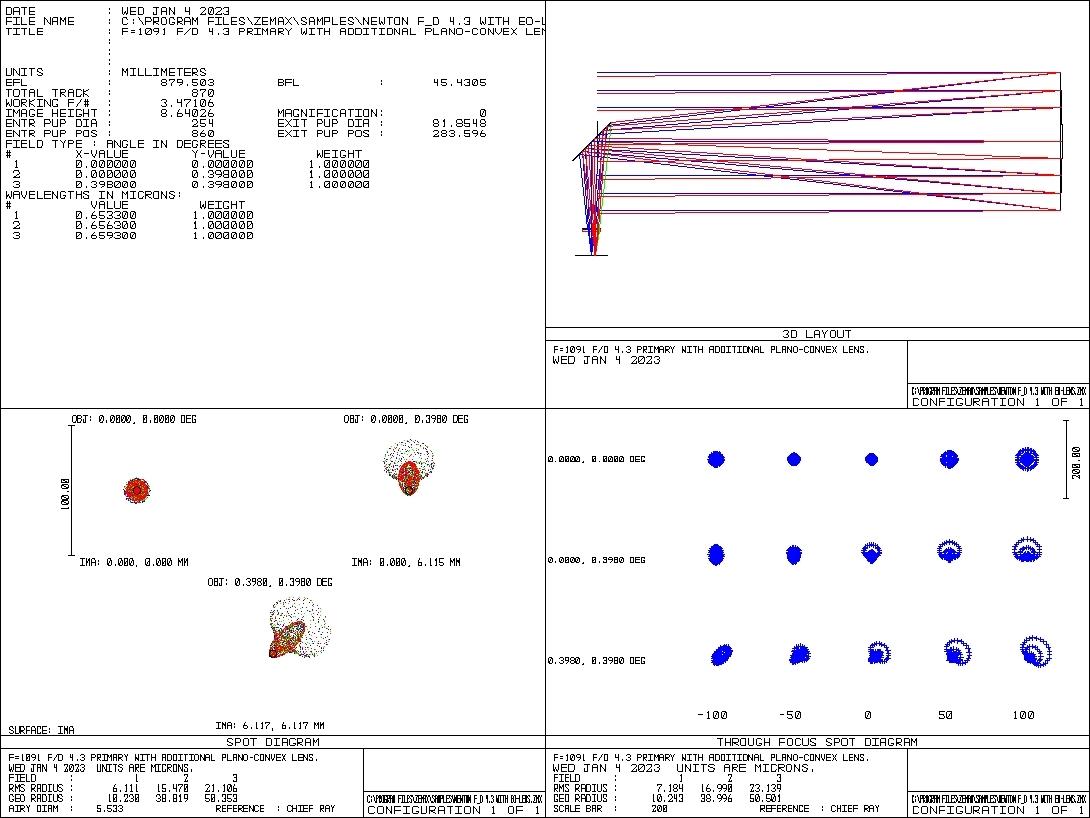 |
Although (for the moment) I was mechanically limited to the 45mm CCD-to-lens separation, increasing this distance would further reduce coma, albeit at the cost of an increase of the spot size in the central part of the image: |
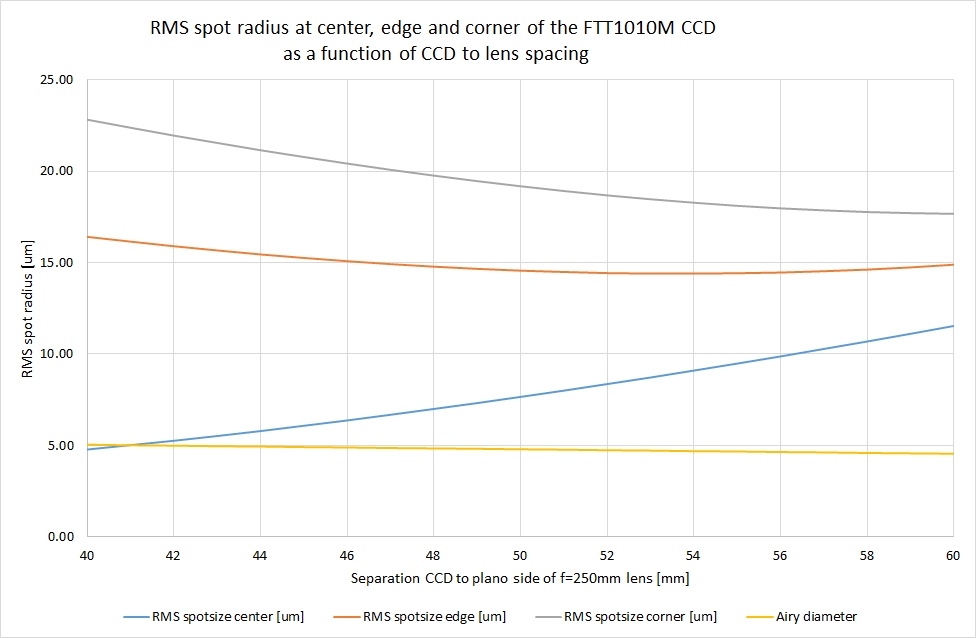 |
Chromatic effects solely result in slight differences in focal position and scale at the S-II, H-alpha and O-III wavelengths. The scale differences (up to 0.2%) are easily corrected for. Here is wat it mechanically looks like: The FTT1010M CCD camera with 7-position filter wheel and the plano-convex lens, and the first results. (Click on the nails for a larger view.) |
